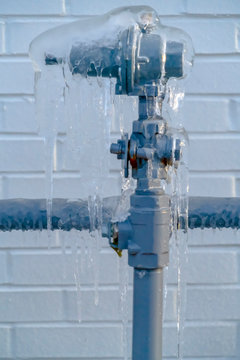Listed here underneath you will find a bunch of superb advice in relation to Helpful Tips to Prevent Frozen Pipes this Winter.

Cold weather can wreak havoc on your plumbing, particularly by freezing pipes. Below's just how to stop it from happening and what to do if it does.
Intro
As temperatures decrease, the risk of icy pipelines rises, possibly resulting in expensive repairs and water damage. Recognizing just how to prevent frozen pipes is critical for house owners in cool environments.
Understanding Icy Pipelines
What creates pipes to freeze?
Pipes ice up when exposed to temperatures listed below 32 ° F (0 ° C) for prolonged periods. As water inside the pipes ices up, it expands, taxing the pipe walls and potentially causing them to burst.
Dangers and problems
Frozen pipes can bring about water supply disruptions, home damage, and pricey fixings. Burst pipelines can flood homes and create extensive architectural damage.
Signs of Frozen Pipes
Identifying icy pipes early can stop them from breaking.
How to determine icy pipes
Look for lowered water circulation from taps, uncommon odors or noises from pipes, and noticeable frost on revealed pipelines.
Prevention Tips
Insulating at risk pipes
Wrap pipes in insulation sleeves or use warm tape to protect them from freezing temperatures. Focus on pipes in unheated or outside locations of the home.
Heating methods
Keep interior spaces adequately heated, particularly locations with pipes. Open up closet doors to enable warm air to circulate around pipelines under sinks.
Securing Outside Pipes
Garden hoses and outside faucets
Disconnect and drain garden hoses before winter. Install frost-proof faucets or cover exterior taps with protected caps.
What to Do If Your Pipes Freeze
Immediate actions to take
If you believe icy pipes, keep taps open to soothe pressure as the ice thaws. Use a hairdryer or towels soaked in hot water to thaw pipes gradually.
Long-Term Solutions
Structural changes
Think about rerouting pipes far from outside walls or unheated areas. Add added insulation to attic rooms, basements, and crawl spaces.
Updating insulation
Purchase premium insulation for pipes, attic rooms, and wall surfaces. Correct insulation assists maintain consistent temperatures and minimizes the risk of icy pipelines.
Conclusion
Protecting against frozen pipes needs aggressive procedures and quick feedbacks. By comprehending the causes, indications, and preventive measures, homeowners can safeguard their plumbing throughout winter.
5 Ways to Prevent Frozen Pipes
Drain Outdoor Faucets and Disconnect Hoses
First, close the shut-off valve that controls the flow of water in the pipe to your outdoor faucet. Then, head outside to disconnect and drain your hose and open the outdoor faucet to allow the water to completely drain out of the line. Turn off the faucet when done. Finally, head back to the shut-off valve and drain the remaining water inside the pipe into a bucket or container. Additionally, if you have a home irrigation system, you should consider hiring an expert to clear the system of water each year.
Insulate Pipes
One of the best and most cost-effective methods for preventing frozen water pipes is to wrap your pipes with insulation. This is especially important for areas in your home that aren’t exposed to heat, such as an attic. We suggest using foam sleeves, which can typically be found at your local hardware store.
Keep Heat Running at 65
Your pipes are located inside your walls, and the temperature there is much colder than the rest of the house. To prevent your pipes from freezing, The Insurance Information Institute suggests that you keep your home heated to at least 65 degrees, even when traveling. You may want to invest in smart devices that can keep an eye on the temperature in your home while you’re away.
Leave Water Dripping
Moving water — even a small trickle — can prevent ice from forming inside your pipes. When freezing temps are imminent, start a drip of water from all faucets that serve exposed pipes. Leaving a few faucets running will also help relieve pressure inside the pipes and help prevent a rupture if the water inside freezes.
Open Cupboard Doors
Warm your kitchen and bathroom pipes by opening cupboards and vanities. You should also leave your interior doors ajar to help warm air circulate evenly throughout your home.

I'm very fascinated by How To Avoid Freezing Pipes and I hope you liked the new entry. Liked our review? Please quickly share it. Help someone else find it. Thanks for being here. Return soon.
Schedule Today!